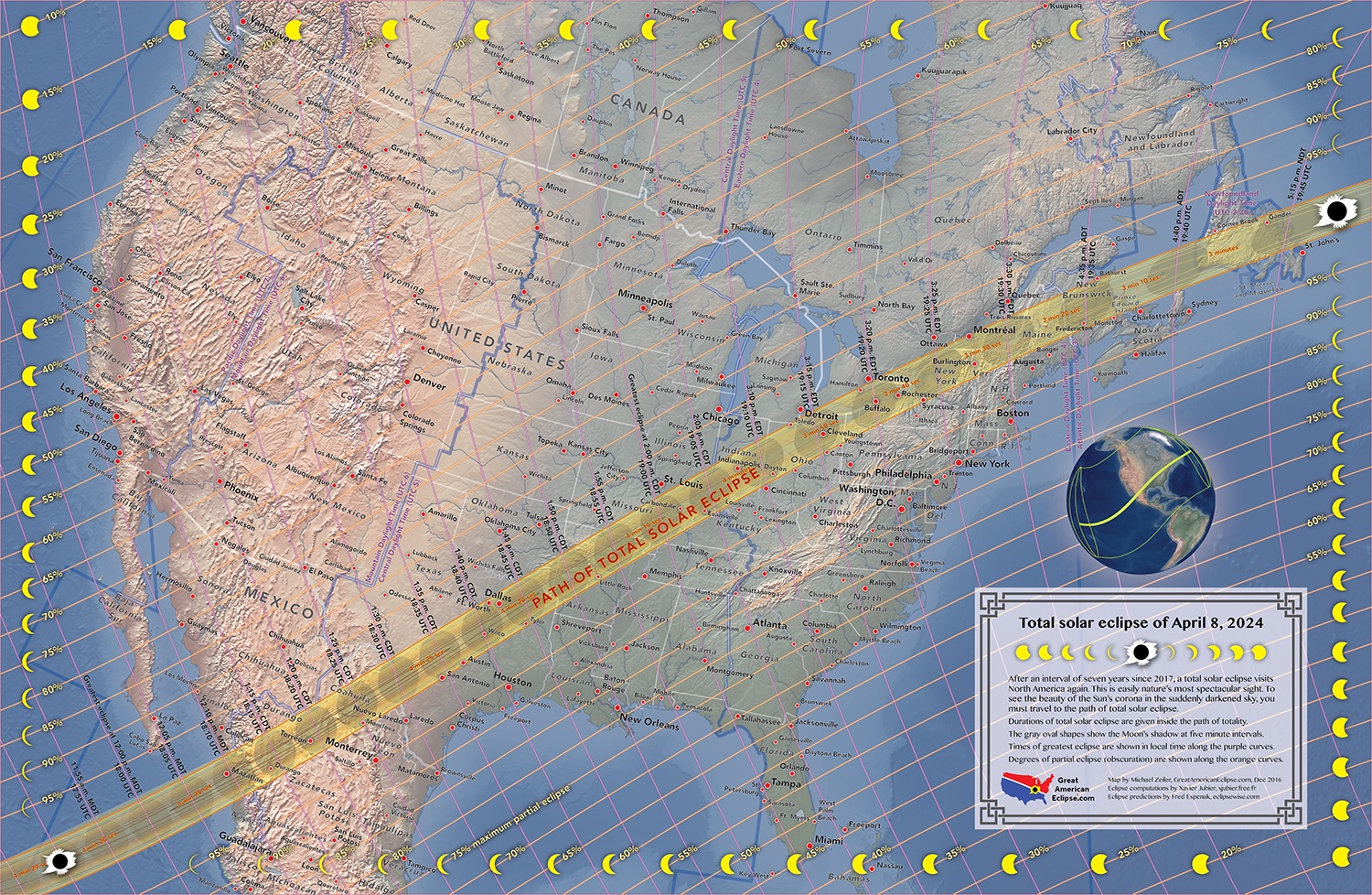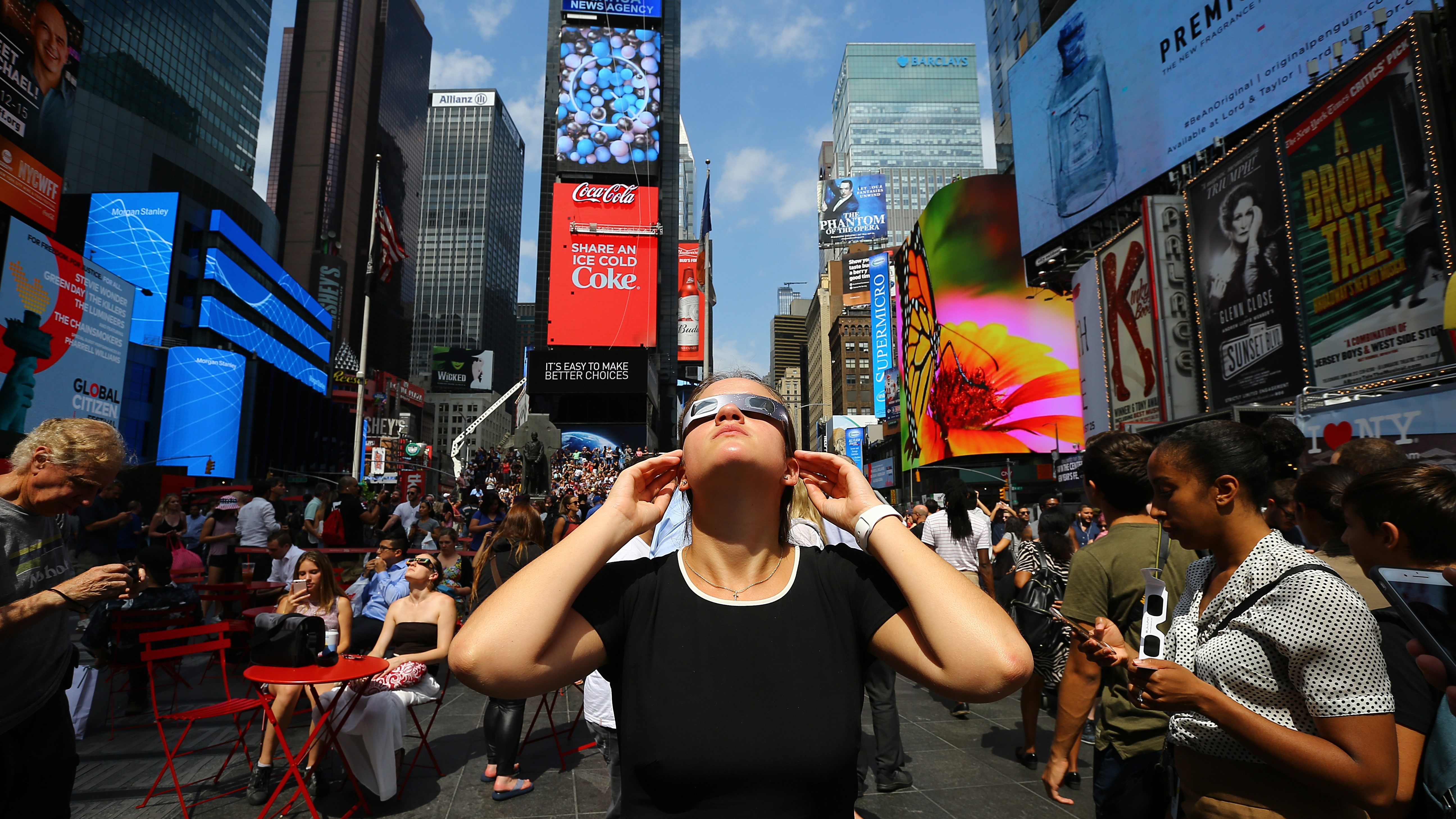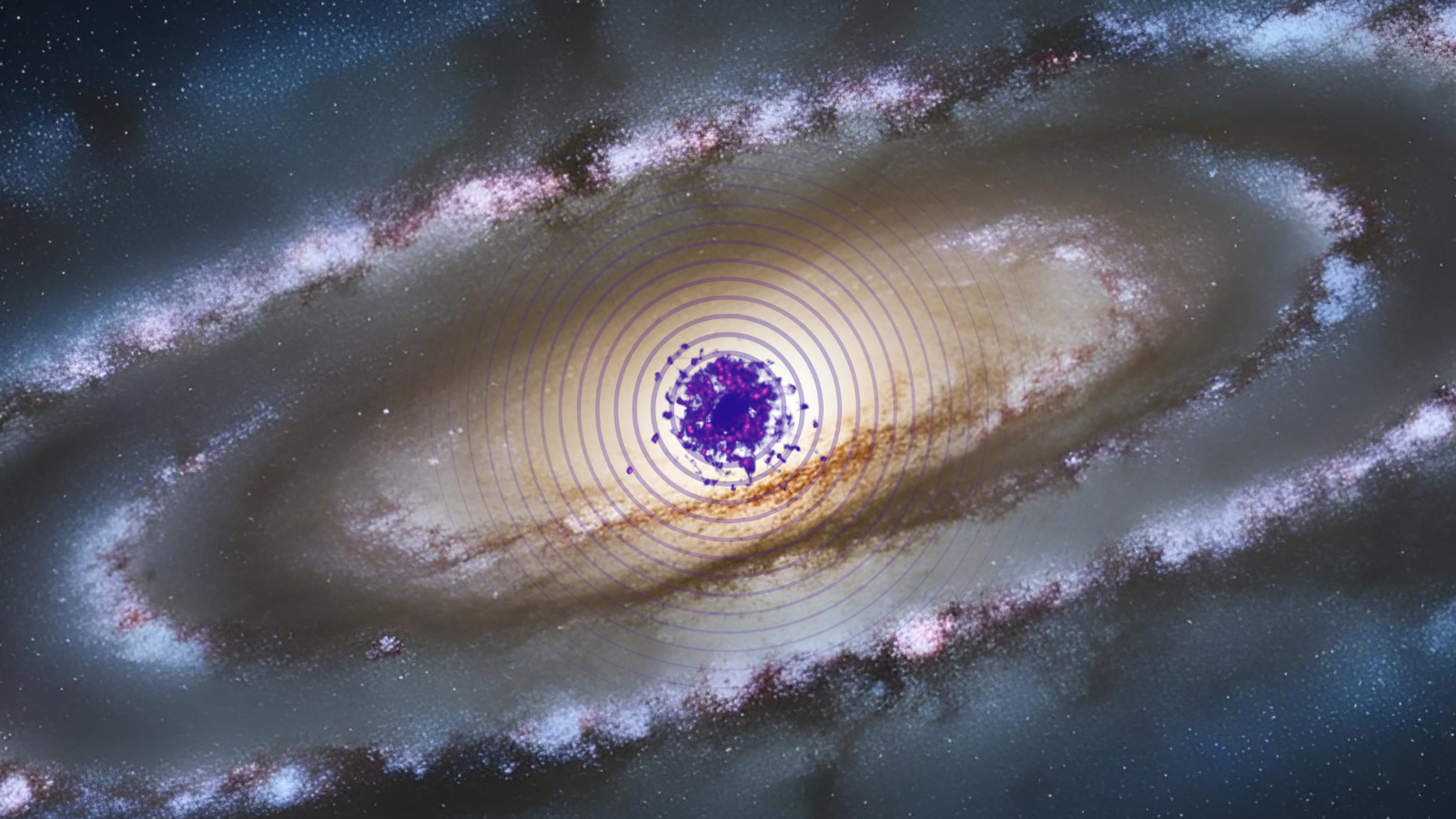Total solar eclipse 2024: Everything you need to know
The first solar eclipse of 2024 was visible from Mexico, 15 U.S. states and southeastern Canada.
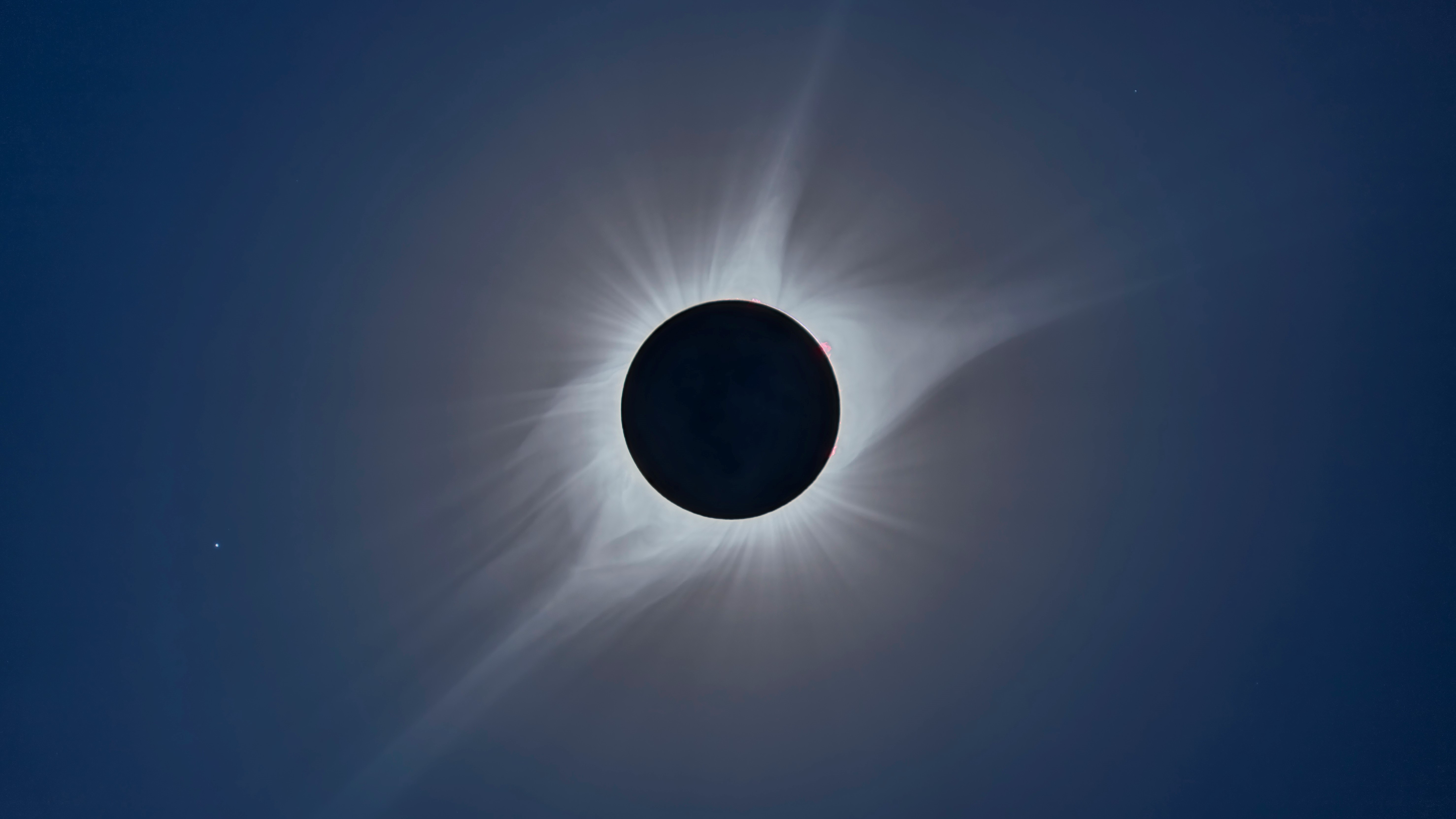
- Key eclipse milestones
- What is a total solar eclipse?
- Where was the total solar eclipse?
- Where and when was the total solar eclipse visible?
- Why was the 2024 total solar eclipse so special?
- Where was the partial solar eclipse visible?
- How to safely view the partial and total solar eclipse
- After April 2024, when is the next total solar eclipse?
- Additional resources
- Bibliography
On Monday, April 8, 2024, a total solar eclipse came to North America.
All of North America and Central America experienced a partial solar eclipse but only those within the path of totality — an approximately 115-mile (185-kilometer) wide route through Mexico, 15 U.S. States and Canada — were able to see the moon entirely cover the sun's disk, according to NASA.
If you missed the celestial event we have rounded up some of the best photos from our readers here in our total solar eclipse 2024 gallery.
Related: When is the next solar eclipse?
It came less than six months after the Oct. 14, 2023, 'ring of fire' annular solar eclipse in eight states in the U.S. Southwest as well as Mexico, Guatemala, Belize, Honduras, Nicaragua, Costa Rica, Panama, Colombia and Brazil.
During a total solar eclipse, the moon appears almost exactly the same size as the sun, so it blocks the entire disk for a few minutes. The result is a beautiful totality during which the sun's corona is visible to the naked eye. Here's everything you need to know about this rare event.
Key eclipse milestones
Breaking space news, the latest updates on rocket launches, skywatching events and more!
- Partial eclipse began near Pu‘uali‘i, Hawaii at 06:27 a.m. local time (12:27 p.m. EDT, 1627 GMT).
- Total solar eclipse made landfall: Mazatlán, Sinaloa, Mexico at 9:51 a.m. local time (12:51 p.m. EDT, 16:51 GMT).
- First location to experience totality: Mazatlán, Sinaloa, Mexico at 11:07 a.m. local time (2:07 p.m. EDT, 1807 GMT)
- First location to experience totality in the U.S.: Near Florentino Ramos Colonia, Texas at 1:27 p.m. local time (2:27 p.m. EDT, 1827 GMT).
- Eclipse left North America: The eclipse will depart land from the Atlantic coast of Newfoundland and Labrador. The total solar eclipse ended at 5:16 p.m. local time (3:46 p.m. EDT, 1946 GMT). With the partial eclipse phase ending at 6:18 p.m. local time (4:48 p.m. EDT, 2048 GMT).
This Eclipse Simulator widget below from skywatching app maker SkySafari allowed you to track the moon's shadow on Earth, see how it may look from different locations and follow the event as it unfolds. It does require your location in order to work properly.
What is a total solar eclipse?
A solar eclipse occurs when a new moon is positioned precisely between Earth and the sun and casts its shadow on Earth. It happens when the moon appears the same size in the sky as the sun, or slightly larger, so fully covers the disk of the sun, giving observers a view of the sun's outer atmosphere, the corona.
The apparent size of the moon in the sky — and whether it can completely cover the sun's disk during an eclipse — depends on the moon's distance from Earth. The moon has a slightly elliptical orbit around Earth, so at two points each month, it is farthest (apogee) and closest (perigee) to Earth, making the moon appear slightly smaller and slightly larger than average in our sky.
On April 8, 2024, the new moon looked relatively large and, therefore, covered 100% of the sun's disk as viewed from the narrow path of totality that stretched from Sinaloa, Mexico through the U.S. to Newfoundland, Canada. The magnitude of a solar eclipse is the fraction of the diameter of the sun covered by the moon, which on April 8, 2024, was 1.0566, according to EclipseWise.com.
Where was the total solar eclipse?
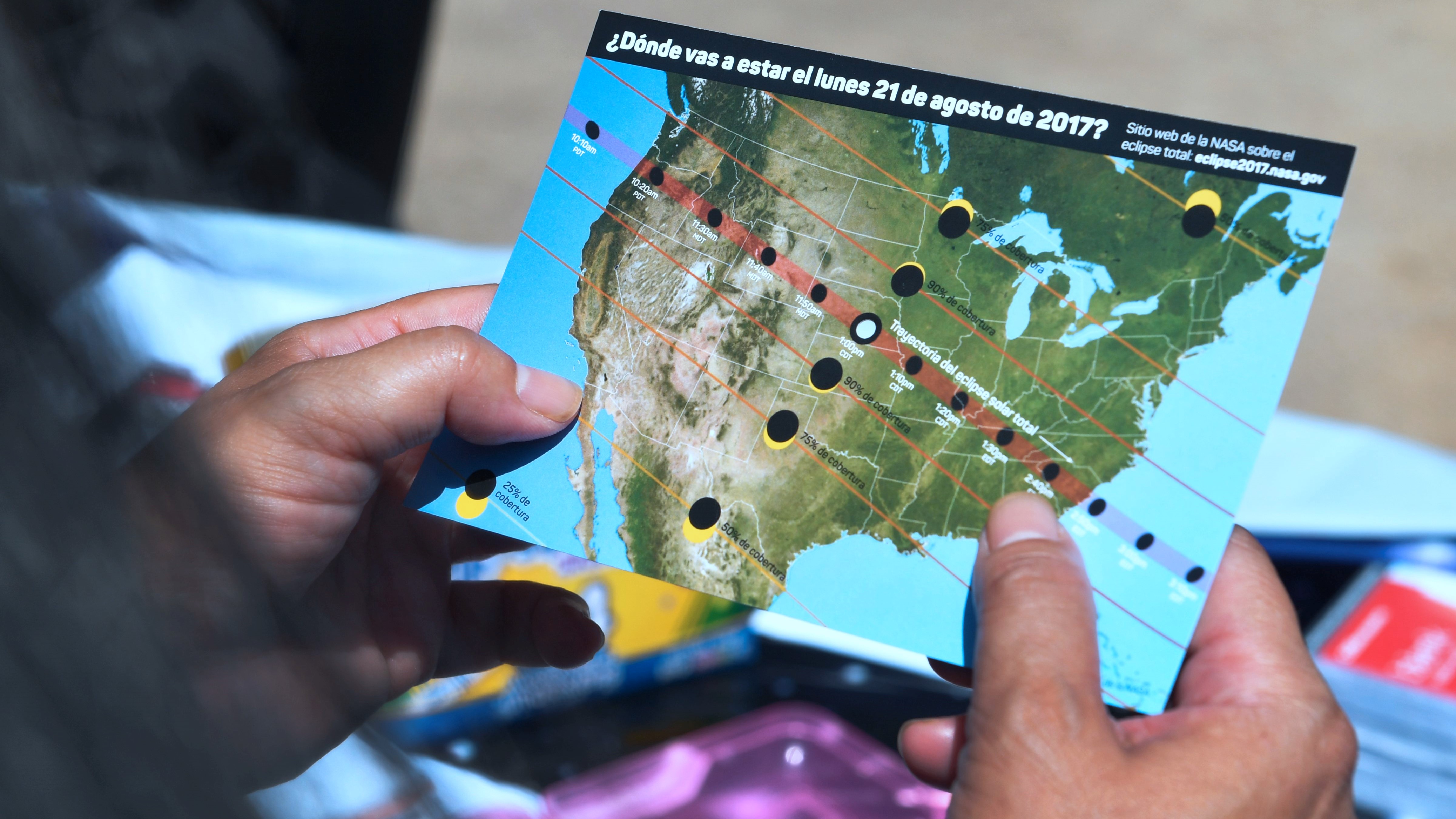
Our how to read and understand a solar eclipse map will help you get the most out of your eclipse viewing venture!
On April 8, 2024, all of North America and Central America experienced a solar eclipse. For most of that region, the spectacle was solely a partial solar eclipse, though of varying obscuration.
Only within the path of totality, which is 100 to 123 miles (162 to 200 kilometers) wide, was a totally eclipsed sun be visible. That path stretched from the Pacific Ocean to the Atlantic Ocean. It first made landfall in Mazatlán in Sinaloa, Mexico and crossed Durango and Coahuila. Entering the U.S. at Texas, the path of totality then moved through Oklahoma, Arkansas, Missouri, Illinois, Kentucky, Tennessee, Michigan, Indiana, Ohio, Pennsylvania, New York, Vermont, New Hampshire and Maine. Ontario, Quebec, New Brunswick, Prince Edward Island and Newfoundland in Canada also experienced totality.
As the path traveled northeast the maximum duration of totality lessened because the moon's distance to Earth changes. At Mexico's Pacific coast, 4 minutes 27 seconds of totality was possible. As the moon's shadow gets larger, the point of longest totality — where viewers could see an eclipsed sun for 4 minutes 28 seconds — occurred at Nazas near Durango, Mexico. After that point the moon's shadow lengthens and narrows, reducing to a maximum totality of 2 minutes 52 seconds as the path exited North America at Newfoundland.
To see the exact path of totality, check out this interactive map created by French eclipse expert Xavier Jubier.
Where and when was the total solar eclipse visible?
Here are some notable locations and cities that experienced a total solar eclipse, together with the local time and duration of that event, according to Jubier. Note that all of these places also saw a long partial solar eclipse before and after the brief totality; their closeness to the centerline of the path of totality determines how long totality lasts:
| Location | Totality (local time) | Totality duration |
|---|---|---|
| Mazatlán, Sinaloa, Mexico | 11:07 a.m. MST | 4 minutes 20 seconds |
| Durango, Durango, Mexico | 12:12 p.m. CST | 3 minutes 50 seconds |
| Torreón, Coahuila, Mexico | 12:16 p.m. CST | 4 minutes 11 seconds |
| Piedras Negras, Coahuila, Mexico/Eagle Pass, Texas, U.S | 1:27 p.m. CDT | 4 minutes 24 seconds |
| Kerrville, Texas, U.S | 1:32 p.m. CDT | 4 minutes 25 seconds |
| Fredericksburg, Texas, U.S | 1:32 p.m CDT | 4 minutes 25 seconds |
| Dallas, Texas, U.S | 1:40 p.m. CDT | 3 minutes 52 seconds |
| Idabel, Oklahoma | U.S: 1:45 p.m CDT | 4 minutes 19 seconds |
| Russellville, Arkansas, U.S | 1:49 p.m. CDT | 4 minutes 12 seconds |
| Cape Girardeau, Missouri, U.S | 1:58 p.m. CDT | 4 minutes 7 seconds |
| Carbondale, Illinois, U.S | 1:59 p.m. CDT | 4 minutes 10 seconds |
| Bloomington, Indiana, U.S | 3:04 p.m. EDT | 4 minutes 3 seconds |
| Indianapolis, Indiana, U.S | 3:06 p.m. EDT | 3 minutes 51 seconds |
| Cleveland, Ohio, U.S | 3:13 p.m. EDT | 3 minutes 50 seconds |
| Erie, Pennsylvania | U.S: 3:16 p.m. EDT | 3 minutes 43 seconds |
| Rochester, New York, U.S | 3:20 p.m. EDT | 3 minutes 40 seconds |
| Montpelier, Vermont, U.S | 3:27 p.m. EDT | 1 minutes 42 seconds |
| Oakfield, Maine, U.S | 3:31 p.m. EDT | 3 minutes 23 seconds |
| Niagara Falls, Ontario, Canada | 3:18 p.m. EDT | 3 minutes 31 seconds |
| Montreal, Quebec, Canada | 3:26 p.m. EDT | 1 minute 57 seconds |
| Miramichi, New Brunswick, Canada | 4:34 p.m. ADT | 3 minutes 8 seconds |
| Tignish, Prince Edward Island, Canada | 4:35 p.m. ADT | 3 minutes 12 seconds |
| Catalina, Newfoundland, Canada | 5:13 p.m. NDT | 2 minutes 53 seconds |
Why was the 2024 total solar eclipse so special?
The 2024 total solar eclipse was a major event. Totality could last twice as long as in 2017, depending on the observer's location. It was also the longest totality on land for over a decade, so eclipse-chasers from around the world flocked to the path of totality.
As a bonus, the sun's corona during totality was huge. That's because the sun is close to solar maximum — when it's most active during its 11 years (or so) solar cycle.
During totality, two planets were visible. Venus was very bright and shone 15º from the sun even before totality began while dimmer Jupiter, 30º from the sun, appeared during totality.
As with all eclipses, it's important to be close to the center of the path of the moon's shadow if you want to experience as long a spectacle as possible. In practical terms that means avoiding the edges of the path of totality, where its length drastically reduces. Aiming for close to the centerline is wise, but there's no need to obsess about it. Besides, a clear sky remains the most important thing.
For those after geographic oddities, the 2017 and 2024 paths crosssed in southern Illinois, Missouri and Kentucky, with locations such as Makanda, Carbondale and Cape Girardeau experiencing totality for the second time in seven years. For a small area of the Texas Hill Country (Uvalde, Concan, Vanderpool, Bandera and Kerrville) it was possible to see both a 'ring of fire' annular solar eclipse on Oct. 14, 2023, and totality on April 8, 2024.
Where was the partial solar eclipse visible?
Totality got most of the attention and all serious eclipse-chasers will try to get to the path of totality. However, on April 8, 2024, most of North and Central America experienced a big partial solar eclipse.
Here is what the biggest cities in Mexico, U.S. and Canada experienced that day at the peak of the event; only Dallas and Montreal (close to St Lawrence River) experienced totality while San Antonio got a 99.9% partial solar eclipse.
Related: What you'll see if you're outside the path of totality
| City | Percentage of sun covered | Time (local) |
|---|---|---|
| Mexico City | 74% | 12:14 p.m. CST |
| Tijuana | 54% | 11:11 a.m. PDT |
| Puebla | 70% | 12:15 p.m. CST |
| New York | 90% | 3:35 p.m. EDT |
| Los Angeles | 49% | 11:12 a.m. PDT |
| Chicago | 94% | 2:07 p.m. CDT |
| Houston | 94% | 1:40 p.m. CDT |
| Phoenix | 64% | 11:20 a.m. MST |
| Philadelphia | 88% | 3:23 p.m. EDT |
| San Antonio | 99.9% | 1:34 p.m. CDT |
| San Diego | 54% | 11:11 a.m. PDT |
| San Jose | 35% | 11:13: a.m. PDT |
| Toronto | 99.9% | 3:19 p.m. EDT |
| Calgary | 26% | 12:43 p.m. MDT |
Given that huge metropolitan areas in the U.S. northeast — New York, Boston, Philadelphia, Washington D.C., Chicago and St. Louis — were all within a two or three-hour drive of totality, this eclipse was a huge travel event.
St Louis, Memphis, Louisville, Cincinnati, Columbus, Detroit, Toronto, Ottawa and Quebec City were also just outside the path of totality, so lots of day-trippers from these cities traveled to the path of totality.
How to safely view the partial and total solar eclipse
To safely view all of this event, and any future solar eclipses, you must use solar filters. Only those in the path of totality could briefly remove them to see the sun's corona with their naked eyes. Those not in the path of totality must have kept them on the entire time.
Everyone who observed the partial phases of this eclipse — and for those outside the path of totality, that's the entire event — needed to wear solar eclipse glasses while cameras, telescopes and binoculars needed solar filters placed in front of their lenses.
Our how to observe the sun safely guide tells you everything you need to know about safe solar observations.
After April 2024, when is the next total solar eclipse?
After the total solar eclipse on April 8, 2024, the next total solar eclipse will occur on Aug. 12, 2026, when totality will be visible from Greenland, Iceland, the Atlantic Ocean and Spain. At the point of greatest eclipse close to Iceland, totality will last 2 minutes, 18 seconds. According to Eclipsophile, there's a high chance of clouds near Greenland and Iceland, with the best chance of a clear sky in Spain, where totality will occur very low in the sky just before sunset.
For North America, the next total solar eclipses are:
- March 30, 2033: in Alaska.
- Aug. 23, 2044: in Canada and the U.S. (Montana, South Dakota, North Dakota).
- Aug.12, 2045: U.S. (California, Nevada, Utah, Colorado, New Mexico, Oklahoma, Kansas, Texas, Arkansas, Missouri, Mississippi, Louisiana, Alabama, Georgia, Florida), Caribbean and South America.
Additional resources
Want to look further ahead? You can find a concise summary of solar eclipses out to 2030 on NASA's eclipse website. Read more about solar and lunar eclipses on Eclipse Wise, a website dedicated to predictions of eclipses, and find beautiful maps on eclipse cartographer Michael Zeiler's GreatAmericanEclipse.com and interactive Google Maps on Xavier Jubier's eclipse website. You can find climate and weather predictions by meteorologist Jay Anderson on eclipsophile.com.
Bibliography
Anderson, J. (2022, September 1). Total Solar Eclipse
2024 Apr. 8. Retrieved July 17, 2023 from https://eclipsophile.com/2024tse/
Bakich, M. and Zeiler, M. (2022). Field Guide to the 2023 and 2024 Solar Eclipses. https://www.greatamericaneclipse.com/books/field-guide-to-the-2023-and-2024-solar-eclipses
Espenak, F. (2013, December 9). Solar eclipses: 2021-2030. NASA. Retrieved July 17, 2023 from https://eclipse.gsfc.nasa.gov/SEdecade/SEdecade2021.html
Jubier, X. (n.d.). Solar eclipses: Interactive Google Maps. Retrieved July 17, 2023 from http://xjubier.free.fr/en/site_pages/SolarEclipsesGoogleMaps.html
NASA. (n.d.). Apr. 8, 2024, solar eclipse. Retrieved July 17, 2023 from https://solarsystem.nasa.gov/eclipses/2024/apr-8-total/overview/
Time and Date. (n.d.). Apr. 20, 2024 - Great North American Eclipse (total solar eclipse). Retrieved July 17, 2023 from https://www.timeanddate.com/eclipse/solar/2024-april-8

Jamie is an experienced science, technology and travel journalist and stargazer who writes about exploring the night sky, solar and lunar eclipses, moon-gazing, astro-travel, astronomy and space exploration. He is the editor of WhenIsTheNextEclipse.com and author of A Stargazing Program For Beginners, and is a senior contributor at Forbes. His special skill is turning tech-babble into plain English.
